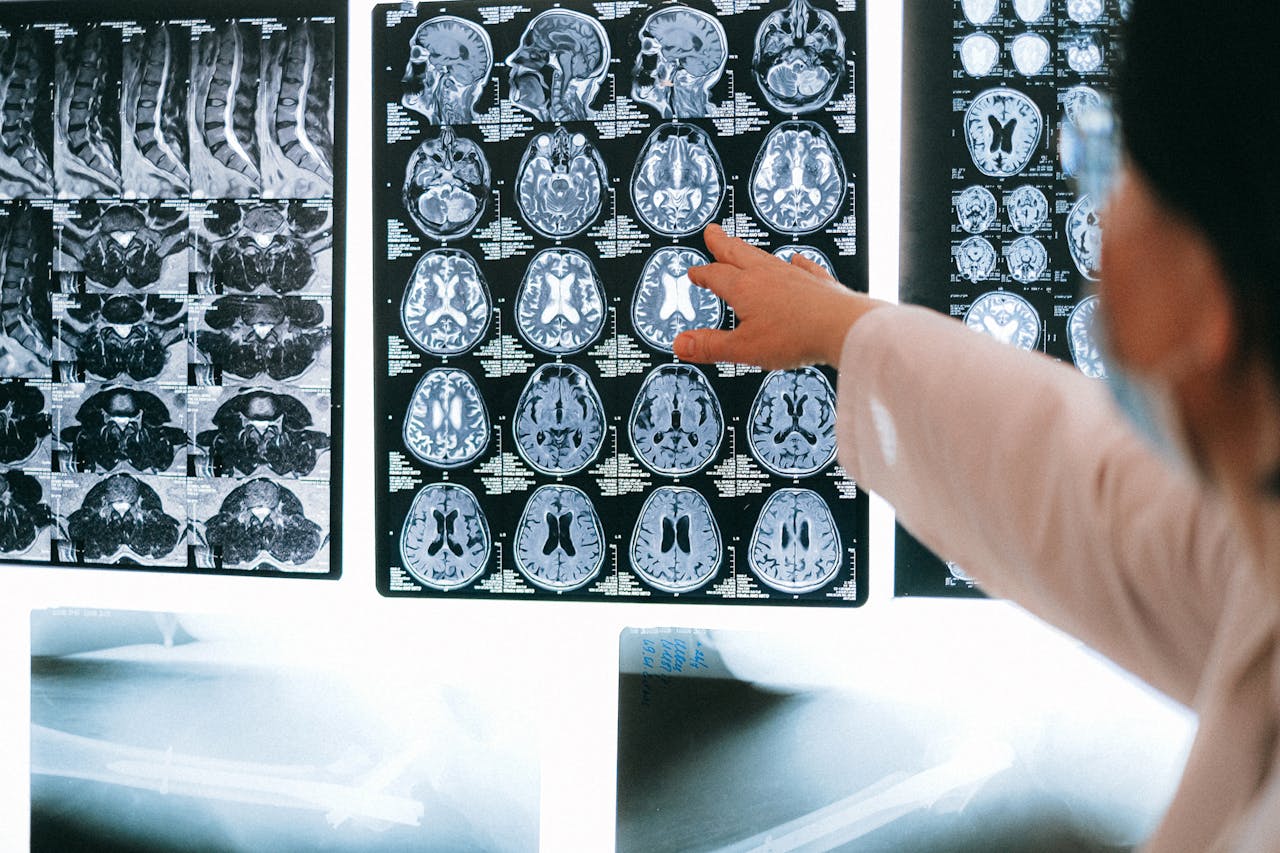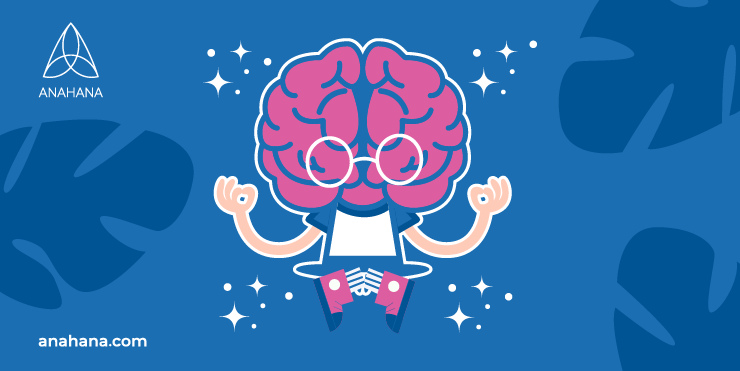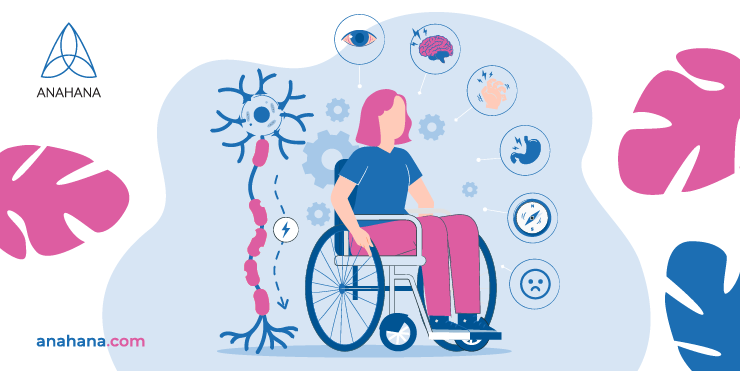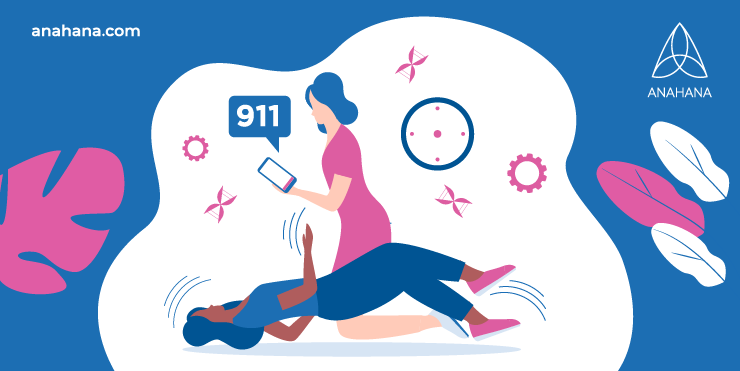
Table of Contents
The nervous system is a complex network of cells and tissues that carries messages between the brain and the rest of the body. The nervous system controls all body activities, from breathing and heart rate to movement, thoughts, and emotions.
Key Takeaways
- The nervous system plays a critical role in controlling body functions through the human brain and spinal nerves.
- Sensory receptors send signals to the brain, which processes and responds through the parts of the nervous system.
- The basal ganglia within the brain tissue are involved in movement control.
- Damage to nerves or brain can lead to nervous system conditions like nervous system disorders.
- The nervous system is essential for motor control, sensation, and maintaining overall body functions.
The nervous system comprises two main parts: the central nervous system (CNS) and the peripheral nervous system (PNS). The CNS consists of the brain and the spinal cord. The PNS comprises all the nerves that branch from the spinal cord to other body parts.
Peripheral Nervous System
The peripheral nervous system carries messages between the central nervous system and other body parts. The PNS divides into the somatic and autonomic nervous systems.
The peripheral nervous system consists of the following systems:
Somatic Nervous System
The somatic nervous system (SNS) controls voluntary body functions, muscle movement, and the senses. Examples include walking, touching, and seeing.
Autonomic Nervous System
The autonomic nervous system (ANS) controls involuntary body activities, such as heart rate and digestion. The ANS can be further divided into the sympathetic nervous system and the parasympathetic nervous system.
Sympathetic Nervous System
The sympathetic nervous system (SNS) is responsible for the "fight-or-flight" response. This is the body's emergency response system that prepares us to either fight or flees when we are in danger. The SNS increases heart rate, blood pressure, and respiration. It also diverts blood away from the digestive system and into the muscles so that they can be used for physical activity.
Parasympathetic Nervous System
The parasympathetic nervous system (PNS) is responsible for the "rest-and-digest" response. This is the body's normal, relaxed state in which the heart rate and blood pressure are low, and the digestive system is active. The parasympathetic nervous system slows the heart rate and increases blood flow to the digestive system.
There is a third component of the autonomic nervous system called the enteric nervous system (ENS). The ENS acts independently and controls digestive functions but is performed by the sympathetic and parasympathetic divisions.
Central Nervous System (CNS)
 The central nervous system consists of the brain and spinal cord and is responsible for processing and responding to information delivered by the peripheral nervous system.
The central nervous system consists of the brain and spinal cord and is responsible for processing and responding to information delivered by the peripheral nervous system.
Brain
The brain is the control center for all body activities. It receives information from the senses and sends signals to the rest of the body. The cerebrum, cerebellum, and brainstem are three significant brain parts.
Cerebrum
The cerebrum is the most significant part of the brain and is responsible for our higher-level functions, such as thinking, reasoning, and planning. It is also responsible for our senses, such as sight, hearing, and touch. The cerebrum is divided into two halves, called hemispheres. Each hemisphere controls the opposite side of the body.
Cerebellum
The cerebellum is located under the cerebrum at the base of the skull. Its primary responsibility is coordinating our movement, helping us maintain balance and walk and stand upright.
Brainstem
The brainstem is the part of the brain that connects the cerebrum and cerebellum to the spinal cord. It controls many automatic functions, such as breathing, heart rate, and blood pressure.
Spinal Cord
The spinal cord is a long, thin bundle of nerve fibers that runs from the brainstem down the center of the back. The vertebral column, or backbone, surrounds it. The spinal cord carries messages between the brain and the rest of the body. It also controls some reflexes, such as the knee-jerk reflex.
Nerves
 Nerves are the highways of the nervous system. They carry messages back and forth between the brain and spinal cord and the rest of the body. Nerves are made up of nerve fibers, which are long, thin strands extending from nerve cells. There are two types of nerve fibers: axons and dendrites.
Nerves are the highways of the nervous system. They carry messages back and forth between the brain and spinal cord and the rest of the body. Nerves are made up of nerve fibers, which are long, thin strands extending from nerve cells. There are two types of nerve fibers: axons and dendrites.
Nerve Cell, or Neuron
Nerve cells, or neurons, are the basic units of the nervous system. They are responsible for receiving and transmitting messages. Each neuron has a cell body, which contains the nucleus. A membrane called the cell membrane surrounds the nucleus. The cell body also contains other organelles, such as mitochondria and lysosomes.
Axons
Axons are long, skinny fibers that extend from the cell body. Axons carry messages away from the cell body to other neurons, muscles, or glands. They are usually covered by a white, fatty substance called myelin. Myelin helps protect the axon and increases the speed at which messages travel.
Dendrites
Dendrites are short, thin fibers that send messages that extend from the cell body. They receive messages from other neurons and relay them to the cell body. They are usually shorter and thinner than axons.
A synapse is the space between one neuron's axon and another's dendrites. Messages are transmitted across synapses from one neuron to another through electrical impulses and chemical neurotransmitters.
Types of Neurons
There are three types of neurons: motor, sensory, and interneurons. Some neurons serve both motor and sensory functions.
Sensory Neurons
Sensory neurons are responsible for carrying messages from the senses to the brain. They are also known as afferent neurons. Many sensory neurons include touch, temperature, and pain receptors.
Motor Neurons
Motor neurons are responsible for carrying messages from the brain to the muscles. They are also known as efferent neurons. There are both somatic and autonomic motor neurons.
Interneurons
Interneurons are neurons that are located in the brain and spinal cord. They are responsible for relaying messages between other neurons. They are also involved in reflexes by transmitting information directly from sensory to motor neurons, bypassing the brain.
Nerve Damage
 Nerve damage can result from injury, disease, or exposure to certain toxins. Symptoms of nerve damage are neuropathy and include numbness, tingling, and pain. Nerve damage can be treated with medications, surgery, or physical therapy. Other options, such as nerve flossing, yoga, and acupuncture, may also be helpful.
Nerve damage can result from injury, disease, or exposure to certain toxins. Symptoms of nerve damage are neuropathy and include numbness, tingling, and pain. Nerve damage can be treated with medications, surgery, or physical therapy. Other options, such as nerve flossing, yoga, and acupuncture, may also be helpful.
Nerve flossing, also called neurodynamic modulation, is a way to treat neuropathy by releasing tension on the damaged nerves. The nerve axis and surrounding joints are stretched and pulled, essentially detangling the nerve from the surrounding soft tissue.
-
Neuropathy around the femur and pelvis often occurs with hemophilia due to blood pooling, putting pressure on the femoral nerve. A study of adolescent boys with hemophilia found that 12 weeks of nerve flossing significantly improved femoral nerve signaling and reduced pain compared to conventional physical therapy.
-
Another study found that four weeks of nerve flossing significantly decreased muscle spasticity (abnormal stiffness) in the wrist and fingers and improved upper limb function in tetraplegic patients following traumatic spinal cord injury.
Peripheral neuropathy is a common side effect of chemotherapy. The results of yoga for reducing chemotherapy-induced neuropathy were studied in survivors of breast, ovarian, and endometrial cancers. The study found that practicing 60 minutes of yoga daily for eight weeks significantly decreased neuropathic pain compared to the non-yoga control group.
Acupuncture can also significantly reduce sensory symptoms and pain and improve patient's quality of life with chemotherapy-induced neuropathy.
Nervous System Disorders
 Many different disorders can affect the nervous system. Some of these disorders are temporary and can be caused by stress or lack of sleep. Other conditions, such as Alzheimer's and Parkinson's, are permanent and progressive. Treating nervous system disorders often involves medication, therapy, and lifestyle changes.
Many different disorders can affect the nervous system. Some of these disorders are temporary and can be caused by stress or lack of sleep. Other conditions, such as Alzheimer's and Parkinson's, are permanent and progressive. Treating nervous system disorders often involves medication, therapy, and lifestyle changes.
Alzheimer's Disease
Alzheimer's disease is a degenerative disorder that affects the brain. The most common cause of dementia is a decline in cognitive function. Symptoms of Alzheimer's disease include memory loss, confusion, and difficulty with language and motor skills. The disease progresses slowly and can eventually lead to death. There is no cure for Alzheimer's, but treatments are available to help manage the symptoms.
Parkinson's Disease
Parkinson's disease is a degenerative disorder that affects the brain. It is the second most common cause of dementia. Symptoms of Parkinson's disease include tremors, rigidity, slow movement, and difficulty with balance. The disease progresses slowly and can eventually lead to death. There is no cure for Parkinson's, but treatments are available to help manage the symptoms.
Multiple Sclerosis
Multiple sclerosis is a degenerative disorder that affects the brain and spinal cord. It is characterized by patches of damage, called lesions, in the myelin sheath. The myelin sheath is a fatty substance that surrounds and protects nerve fibers. When the myelin sheath is damaged, nerve impulses are disrupted, and symptoms can occur. Symptoms of multiple sclerosis include fatigue, weakness, muscle spasms, and difficulty with balance. The disease can be mild or severe, and there is no cure for multiple sclerosis. However, treatments are available to help manage the symptoms.
Cerebral Palsy
Cerebral palsy is a disorder that affects movement and muscle tone. It is caused by damage to the brain, typically before or during birth. Symptoms of cerebral palsy can include muscle spasms, weakness, and difficulty with coordination and balance. The severity of the symptoms can vary from person to person. There is no cure for cerebral palsy, but treatments are available to help manage the symptoms.
Conclusions
The nervous system is a complex network of nerves and cells that carry messages back and forth between the brain and the rest of the body. It is responsible for our thoughts, emotions, movements, and sensations. The nervous system can be affected by injury, disease, or exposure to certain toxins. Nerve damage can lead to numbness, tingling, and pain. Many different disorders can affect the nervous system.
References
Anatomy, Central Nervous System - StatPearls - NCBI Bookshelf
Neuroanatomy, Somatic Nervous System
Anatomy, Autonomic Nervous System
Neuroanatomy, Central Nervous System (CNS) - StatPearls - NCBI Bookshelf
Neuroanatomy, Cerebral Cortex - StatPearls - NCBI Bookshelf
Physiology, Nerve - StatPearls - NCBI Bookshelf
Disclaimer
The contents of this article are provided for informational purposes only and are not intended to substitute for professional medical advice, diagnosis, or treatment. It is always recommended to consult with a qualified healthcare provider before making any health-related changes or if you have any questions or concerns about your health. Anahana is not liable for any errors, omissions, or consequences that may occur from using the information provided.

By: Anahana
The Anahana team of researchers, writers, topic experts, and computer scientists come together worldwide to create educational and practical wellbeing articles, courses, and technology. Experienced professionals in mental and physical health, meditation, yoga, pilates, and many other fields collaborate to make complex topics easy to understand. Anahana is also home to specialists in crystals, tarot, angel numbers, astrology, life path numbers, zodiac signs, and horoscopes. By combining evidence-based wellness with spiritual and energetic practices, the team offers clear, trustworthy guidance for both mind-body health and modern spirituality.